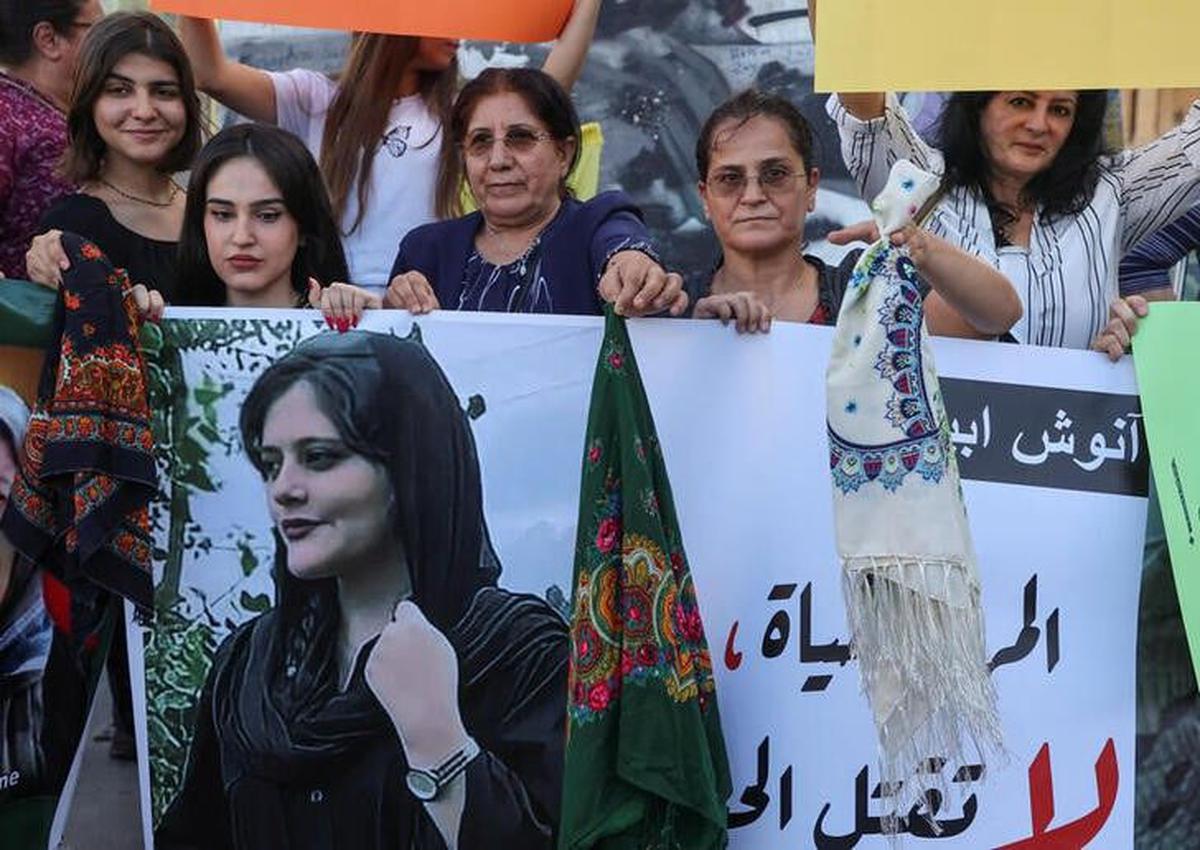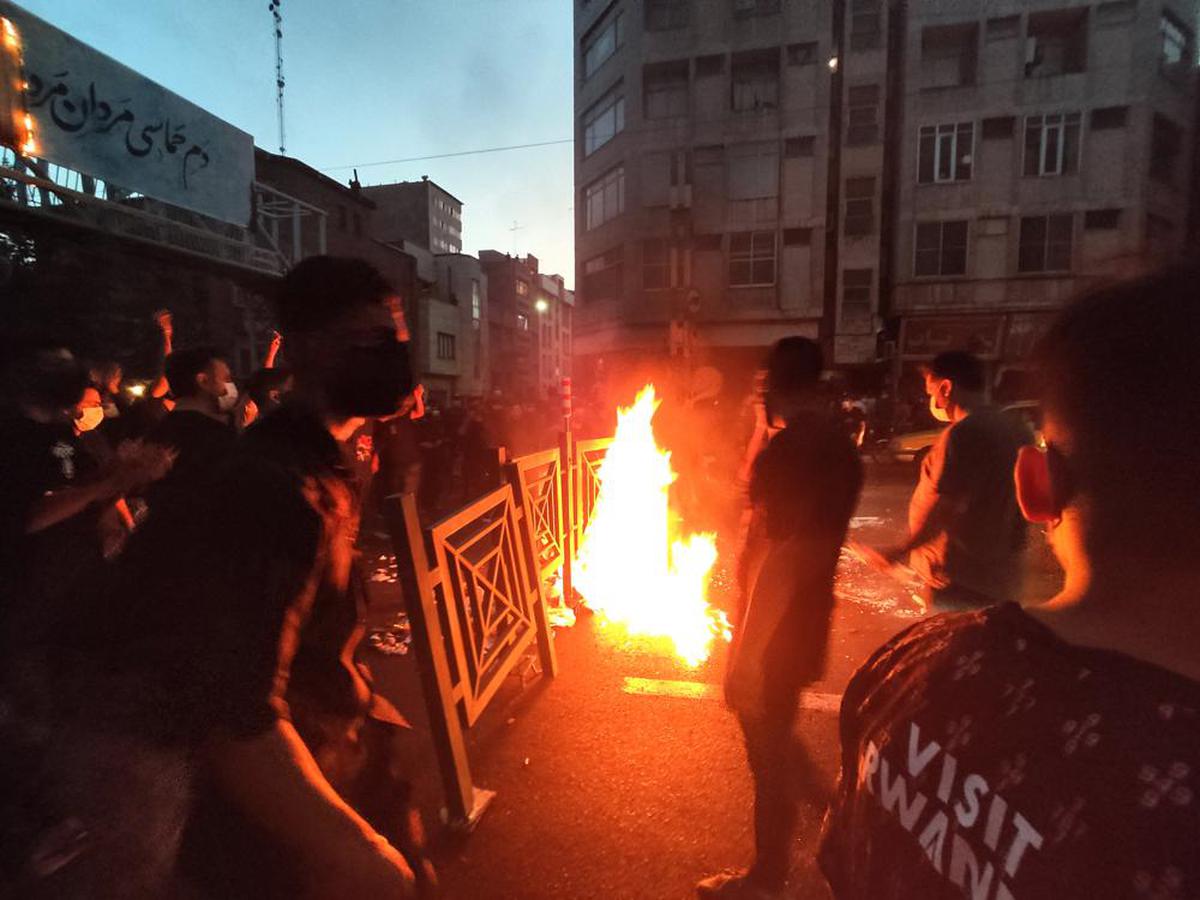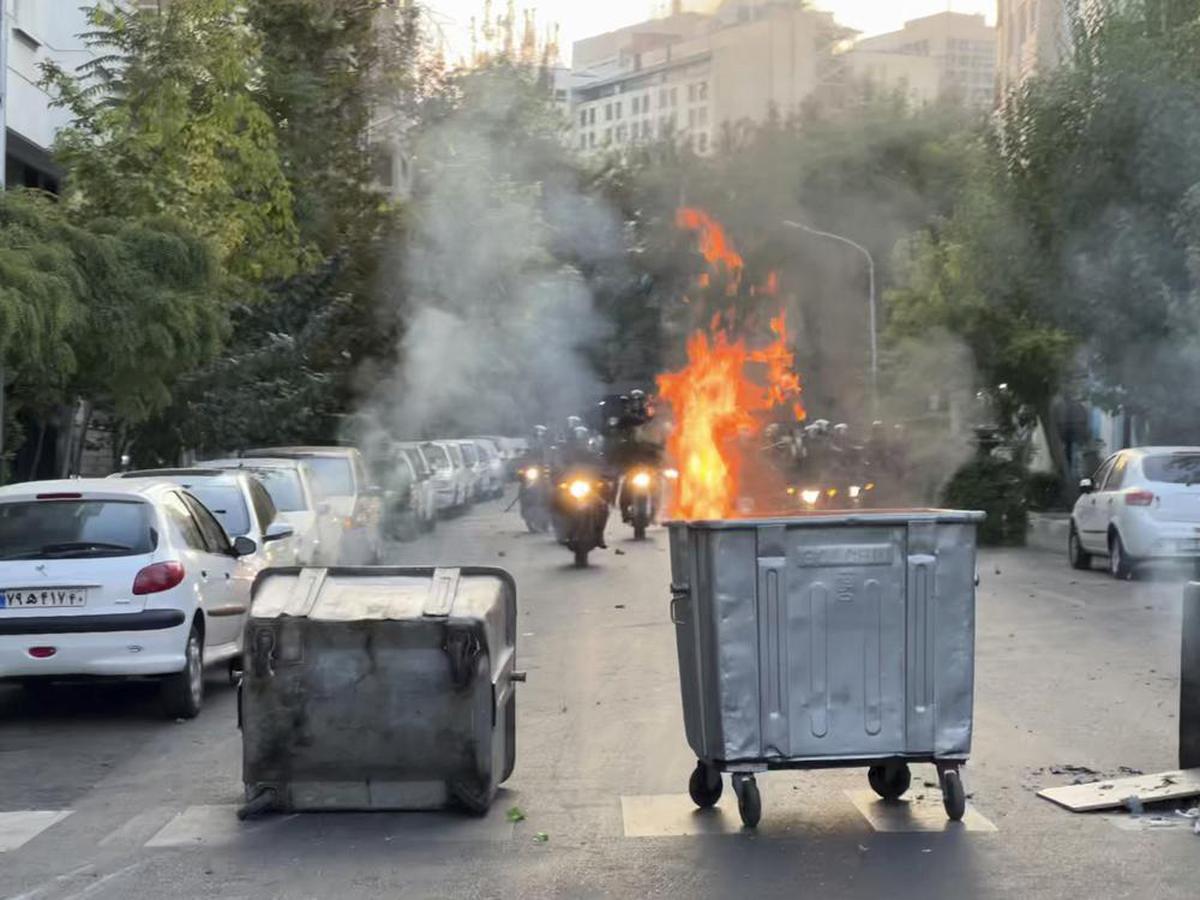What has triggered the fresh wave of protests in Iran? Why are women demanding ‘death to the dictator’?
What has triggered the fresh wave of protests in Iran? Why are women demanding ‘death to the dictator’?
The story so far: Massive anti-government protests in Iran following the death of a 22-year-old woman have spread to several cities across the country in the past one week, leaving over 40 people dead and hundreds injured.
The new wave of protests — the largest in Iran since the 2019 protests over gasoline prices — was triggered over the death of 22-year-old Mahsa Amini in detention of Iran’s morality police. Ms. Amini was arrested earlier this month in Tehran for allegedly violating the strict hijab rules which mandate loose-fitted clothes and covered hair.
Following her death in detention, videos flooded the internet showing extraordinary scenes of women cutting their hair and burning hijabs in public, clashing with the police, demanding ‘death to the dictator’ and calling for the end of the Islamic Republic. The government has resorted to force to deal with protestors as reports of the use of batons and water cannons have emerged. A near-total internet blackout has also been reported.
The death of Mahsa Amini
Originally from Iran’s Kurdistan province, Mahsa Amini was in Tehran to meet her relatives. On September 13, she was detained by the morality police for violating the dress code regulations for women when she was out with her brother. Her family was assured that Ms. Amini will be released after a “re-education session”, but that never happened.
Ms. Amini died on September 16 after she was rushed to the hospital from the centre.
While the police said she died of a heart attack, her family dispute the claim. According to her brother’s account in local news media, screams could be heard from inside the detention centre after which an ambulance arrived and a person coming out of the centre told him that a woman had been killed by security forces.

Women hold a picture of Mahsa Amini during a sit-in following her death, at Martyrs’ Square in Lebanon.
| Photo Credit: Reuters
Videos and photos which surfaced online showed the woman with bandages around her neck and tubes in her face, lying unconscious on a hospital bed.
In a statement, police said Ms. Amini had suffered a heart attack at the detention centre where she had been taken for “education”.
“Since her transfer to the vehicle and also at the location [station], there was no physical encounter with her,” the statement said. The authorities later released CCTV footage of the detention centre which appeared to show a woman speaking to another before she stumbles and collapses on a chair. She is then carried by men to the ambulance. While police have claimed that the woman seen in the video was Ms. Amini, her family hasn’t confirmed this yet.
Her relatives, however, claim that Ms. Amini was healthy and had no history of heart trouble. Her father Amjab Amini said he for access to videos from cameras inside the car and the police station, but never received an answer from authorities. He told local media that he was not allowed to view his daughter’s body in the hospital but saw bruises on her foot.
He alleged that authorities even pressurised him to bury the body at night, but they convinced them to bury her in the morning instead. Ms. Amini was buried in her home city of Saqez on September 17.
The clashes and crackdown
Ms. Amini’s detention and death became a rallying point for Iranians angry with the country’s laws that are seen as oppressive The first series of demonstrations were held outside the hospital where Ms. Amini died. As news of her tragic death spread, more people hit the streets and women took to the internet to share videos of themselves cutting their hair and burning their hijabs. A video widely shared on social media showed a woman taking off her hijab before she cut her hair in front of a cheering crowd.
Other videos showed protesters clashing with the police, raising anti-government slogans and chanting “death to the dictator”, referring to Iran’s supreme leader Ayatollah Ali Khamenei.
The Persian hashtag #MahsaAmini was used over 8 million times on Twitter, as of last Thursday.

A woman cuts her hair in protest in a social media video.
| Photo Credit: Reuters
On September 17, when Ms. Amini was buried in her hometown Saqez, a crowd gathered outside the Saqez Governor’s office to stage a protest. As per reports, police used tear gas to disperse protesters and several were arrested.
In the following days, protests intensified and spread across the country. From university campuses in Tehran to remote cities, protests swept the country. Photos of Iranian women dancing as they burnt their headscarves on the streets and protesters setting trash bins ablaze flooded the internet.
As the protests intensified over the weekend, further reports of clashes and police using water cannons and tear gas also emerged from other cities. Amnesty International claimed that birdshot and metal pellets were fired, while some protesters were beaten with batons.
Why are women in Iran cutting their hair in protest?
On Thursday, protesters torched police stations and vehicles in Tehran and several other Iranian cities, Reuters reported.
Videos posted to Twitter accounts showed protestors chanting “We will die, we will die but we’ll get Iran back” near a police station which was set on fire. Another police station was set ablaze in Tehran. In the province of Mazandaran, crowds damaged or set fire to over 40 government properties and injured 76 security officers, the deputy governor claimed.
While state-run media acknowledged on Friday that at least 26 people, including police officers, had died in the unrest, NGO Iran Human Rights (IHR) claimed that 31 civilians were killed in protests so far. “The people of Iran have come to the streets to achieve their fundamental rights and human dignity… and the government is responding to their peaceful protest with bullets,” IHR Director Mahmood Amiry-Moghaddam said in a statement. He added that the NGO had confirmed protests in over 30 cities and other urban centres, raising alarm over “mass arrests”.

Protesters block the street during a protest in Tehran, Iran on September 21.
| Photo Credit: AP
Iran’s Revolutionary Guards on Thursday called on the judiciary to identify and prosecute “those who spread false news and rumourson social media as well as on the street and who endanger the psychological safety of society and to deal with them decisively.” t
Internet services, meanwhile, remain disrupted in parts of the country, which protesters say is the government’s method to prevent them from sharing information about the crackdown online. Access to Instagram and WhatsApp has been blocked, as per reports. Fars news agency said, “In accordance with a decision by officials, it has no longer been possible to access Instagram in Iran since yesterday [Wednesday] evening and access to WhatsApp is also disrupted.” Facebook, Telegram, Twitter and YouTube are already blocked for people in the country.

A trash bin is burning as anti-riot police arrive during a protest in Tehran on September 20, 2022.
| Photo Credit: AP
The hijab rules and the ‘morality police’ of Iran
The hijab, or headscarf, is considered modest attire in Islam. Under Iran’s Sharia, or Islamic law — imposed after the 1979 revolution — women are required to cover their hair and wear long, loose-fitting clothes. The leader of the revolution, Ayatollah Ruhollah Khomeini, announced that hijabs will be mandatory for all women in their workplaces, irrespective of their nationality or religion. His announcement unleashed public anger with thousands taking to the streets of Iran in protest. . Initially, the hijab was mandatory in government and public offices. It was later made compulsory for all women in 1983. Non-wearing of the veil became punishable by 74 lashes. A provision for arrest was also added later.
What is Iran’s morality police?
1. The morality police are tasked with detaining people who violate Iran’s conservative dress code to “promote virtue and prevent vice”.
2. Those found in violation are either given notice or taken to “correction facilities” where they are taught how to dress and act before being released to their male relatives.
3. Typically, a unit of morality police consists of a van with a mixed male and female crew that patrols or waits in busy public spaces to scan for those not dressed or behaving in accordance with law.
4. They are often made up of and backed by the Basij, a paramilitary force initially mobilised to fight in the Iran-Iraq war.
As authorities in Iran struggled to enforce the strict law, women of all ages continued to mark their protest by wearing tight-fitting clothes, exposing strands of hair. The morality police were constituted when Iran’s revolutionary state grappled withself-styled elements who patrolled the streets to combat “bad hijab.”
In 2005, the Supreme Council of Cultural Revolution resolved to adopt “strategies to develop a culture of chastity”. Under Mahmoud Ahmadinejad, the morality police took their current Persian name Gasht e Ershad, or Guidance Patrols. The force is often criticised for its heavy-handed approach as women are frequently detained and released only after a male relative’s assurances.
The need for such a force was debated during the 2009 presidential elections as reformist candidates called for its dissolution, but no action has been taken so far. But defiant Iranian women have been at the forefront of protests against the establishment, flouting dress code rules in public as a symbolic protest against compulsory veiling.
In 2017, an Iranian woman named Vida Movahed was arrested after a photo of her waving her hijab above her head on Tehran’s Enghelab Street, or Revolutionary Street, went viral.
The state recently attempted to reinforce the law, employing methods such as surveillance cameras to monitor and fine unveiled women and a prison sentence for those who posted online content against the hijab rules. Protesting this, rights activists urged Iranian women to resist the mandatory wearing of the hijab. On the ‘National Day of Hijab and Chastity’ in July, Iranian women hit the streets across the country and posted photos and videos of themselves publicly removing their veils. Fars news agency called the protests an attempt by the “counter-revolution” to “promote bad hijab”.
Global criticism of Iran
Iran has faced global condemnation over the death of Ms. Amini. On Thursday, the U.S. government imposed sanctions on the morality police of Iran. It also sanctioned leaders of the Iranian Ministry of Intelligence and Security, the Army’s Ground Forces, the Basij Resistance Forces and other law enforcement agencies. Sanctions deny access to any property or bank accounts in the U.S. “These officials oversee organisations that routinely employ violence to suppress peaceful protesters and members of Iranian civil society, political dissidents, women’s rights activists, and members of the Iranian Baha’i community,” the U.S. Department of the Treasury said in a press release.
Earlier, the United Nations had demanded an investigation into the detention and death of the 22-year-old. “Mahsa Amini’s tragic death and allegations of torture and ill-treatment must be promptly, impartially and effectively investigated by an independent competent authority,” said Nada Al-Nashif, the acting U.N. High Commissioner for Human Rights. On Thursday, independent experts affiliated with the U.N. said that reports indicated Ms. Amini was severely beaten by the morality police.
Italy’s Foreign Ministry said “violence against innocent people, especially women and girls, can never be tolerated,” while asking Iran to hold to account “the perpetrators of this cowardly act”.
Iran, meanwhile, has rejected international criticism and said a probe has been ordered into the death of Ms. Amini. Iran’s president Ebrahim Raisi said the death of the woman in the custody of the morality police must be “steadfastly” investigated. Mr. Raisi, who is in New York for the U.N. General Assembly, however, lamented what he said were “double standards” in the West with regards to human rights.
Earlier, Iranian Foreign Minister Hossein Amir Abdollahian had accused the U.S. of “shedding crocodile tears”, and added, “to Iran, human rights are of inherent value — unlike those who see it (as) a tool against adversaries.”
State-run broadcasters also pinned the blame for the unrest on foreign countries and exiled opposition groups, saying Ms. Amini’s death is being used as a pretext for more economic sanctions. Tehran province Governor Mohsen Mansouri also accused foreign embassies of fanning the situation. Without revealing details, he claimed that three foreign nationals were arrested in the matter, per agency reports.
(With inputs from agencies)
















